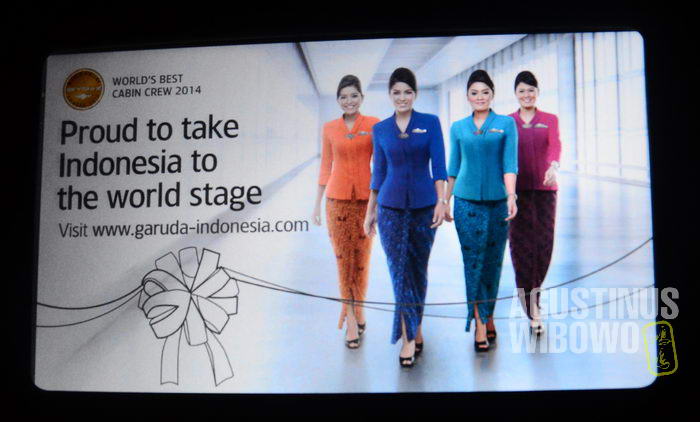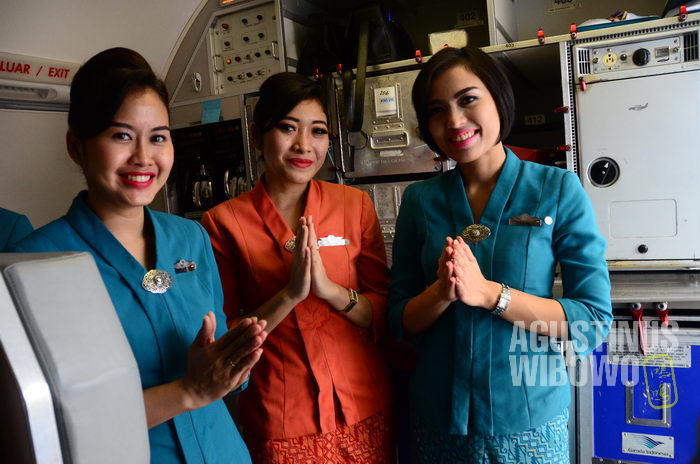Indonesia: The Dollar Worshipers
 I am Indonesian. I had to go abroad urgently. Thinking myself a nationalist, I automatically logged into the website of the national carrier—my pride—Garuda Indonesia. I did the e-booking for the international flight ticket. I was surprised that all prices were quoted in US Dollars, instead of in my own currency, Rupiah.
I am Indonesian. I had to go abroad urgently. Thinking myself a nationalist, I automatically logged into the website of the national carrier—my pride—Garuda Indonesia. I did the e-booking for the international flight ticket. I was surprised that all prices were quoted in US Dollars, instead of in my own currency, Rupiah.
I was confused, but I had to pay anyway. I got more confused that none of my national bank debit cards was accepted for the payment. Garuda only wanted Credit Card with the international logo of Visa or Mastercard. I was heartbroken. Our country’s national airline refused our own money and denied our own national banks.
Alas. My Credit Card was over limit. I rushed to a private tour agent. I was relieved because they said they could help. But they quoted a price much more expensive than the one I saw earlier on the website. And yes, it was also in US dollars.
I asked whether I could pay in rupiah, or use my debit cards.
No, they said. Better bring us crispy US dollar bills, otherwise you have to agree with our unfavorable exchange rate.
I ran to the nearby ATM, withdrew about a hundred pieces of rupiah bills of the highest denomination. Then I had to run again to find a moneychanger. My piles of rupiah notes turned to only 7 pieces of US dollar notes with Benjamin Franklin smiling on each of them.
The US money were as new and fresh and crispy and hot as if they just came out of the printing machine. They were all the newest emission, or at most were printed last year. They were flawless: no folds, no marks, no holes, no inks, no spot, no fingerprint. The guy in the moneychanger treated the 3D-hologrammed US money with the highest care. He touched only the corner of the bills, then gently put them inside a thick-board envelope so the money would be preserved in tiptop condition ever after.
I worried that my dirty hand would ruin the dollars. So I better ran back immediately to the tour agent. The lady in the tour agent desk was happy with my dollars. She scrutinized each of the bills one by one. And voila, I got my Garuda ticket!
In this country, people treat their own currency differently from how they do to US dollars. They fold rupiah, they crumple it, they tear it, they make some drawings or signature on it, they write love letters on it, they deface the pictures printed on it, … they do anything to it. Surely they will not be dare to do the same to the dollars bills. The dollars are treated like idols to be worshipped. Bring a dollar bill with a small folding on its corner, and no banks nor moneychangers will accept it. Try to staple your dollar, and your precious wealth will be automatically devoid. Even your perfect-conditioned dollars are not meant to be always worthwhile.
In 2003 they refused all US dollar bills with serial number starting with letter ‘C’, accepting only those with ‘D’ and ‘F’ printed in 2001. In 2006, the US published money with serial number starting with ‘H’, so the Indonesian banks and moneychangers started to refuse all money with ‘D’. In 2009 they only accepted money with ‘H’. Now they refuse all “white dollars”, only accepting the new-design dollar with 3-D hologram published in 2013, and prefer those with letter ‘L’.
You are forgiven if you think that the moneychangers in this country behaving more like a numismatic collector. Not only they prefer the bills in tiptop condition, many businesses here also prefer to accept dollar as payment rather than their own rupiah. Flight tickets, hotel rooms, high-class apartments and condos, office rents, shipping costs are all quoted in dollars, and require payment to be made in dollars. Even the government bodies and companies still use the dollars in many of their transactions.
While Garuda Indonesia only accepts dollars for its international flight, the Malaysian Airlines quotes price in rupiah and accepts rupiah as payment for any international flights originating from Indonesia. Which one you call more nationalist, then?

As far as I know, most national airlines of other “normal” countries use their own currency as their base of ticket pricing, international or domestic. In China, all prices are in yuan. In Malaysia, ringgit. In Singapore, Japan, Australia, Thailand, even in Papua New Guinea, the national carriers use their local currencies proudly and confidently. In Uzbekistan, even though the international ticket was quoted in US Dollars, but one should pay in Uzbek Sum, even though considering the small value of Sum, one may need to bring two plastic bags of money just to buy a ticket. In all those countries, nobody would care if your dollars were printed three years ago or have folds. Because dollar is just a dollar, a money to pay, not an antique to collect, and surely not an idol to worship.
This year, seventy years after Indonesian independence, the government attempted to improve this situation a little bit by making a new regulation. It is stated that starting from 1 April 2015, rupiah should be used in all transactions inside Indonesia. Violation to this regulation will be punished with at least a year in jail or 200 million rupiah of fine.
It’s obvious that Indonesians are less than confident toward their own currency. The insecurity is actually understandable. Currently traded at 13,300 rupiah per US dollar, rupiah is considered one of the most worthless currency in the world. Rupiah is also one of the most fluctuating currency in the world.
Started with an exchange rate of 3.8 rupiah to 1 US$ in 1949, rupiah was officially devalued to 11.4 rupiah per dollar in 1952. The inflation rates skyrocketed to over 100% in 1962, 1963, and 1964, and over 600% in 1965, and rupiah depreciation was out of control. In late 1965, the government decided to introduce ‘new rupiah’, by “cutting” the value of the money from 1,000 rupiah to 1 new rupiah. In 1971 the rate was 415 rupiah to the dollar, which was maintained all the way to 1978, when the government devalued rupiah to 625 rupiah to the dollar.
The rupiah was 2350 to 1 US$ in 1997 before the Asian Financial Crisis hit Indonesia. The crisis of confidence slumped the Indonesian economy. Not only the foreign investors withdrew the money out of the country, the local Indonesians, from businessman to housewives, also follow the suit—selling rupiah for dollars. The panic worsened the rupiah even deeply. The peak was in May 1998, when the rate reached 16,800 rupiah to 1 US$.
Living with such fluctuating and almost-always-falling national currency has made Indonesians lost most of their confidence in rupiah. Deep in any Indonesians’ mind, rupiah is always a risky currency to hold. What you have today will worth much less in the near future. Thus, the Indonesian middle class would prefer to have some savings in foreign currencies rather than having it all in rupiah. The fear is actually an evil circle. The insecurity causes the worsening of rupiah value, and the worsening of rupiah value will cause the insecurity even deeper.
Thus, this will maintain the subconscious attitude of Indonesians treating their own currency as garbage, while worshipping the dollars as if they are the powerful saviors. This will also maintain the position of rupiah as the slave of the dollars. When the US economy slowed down (thus the dollar weakened), rupiah also followed its suit to weaken. But when US economy recovers and the dollars strengthens, the rupiah still weakens as usual.
Quite opposite was the attitude of our neighboring India. Facing with the same problem of the dollar rate uncertainty, the Indian government made an urgent call to Indian diaspora worldwide to remit their dollar to India. India is now the world leader in receiving remittances, with international migrants sending US$ 62 billion in 2012. This helped Indian rupee to be more stable towards the US dollars, amidst the crisis.
While in Indonesia, any slight move of strengthening dollars will make more households to rush to the moneychangers to buy dollars (maybe because they are afraid they will not be able to buy Garuda flight tickets anymore?). More and more our billionaires also feel safer to park their money in international financial havens, especially Singapore (and this helps to make Singapore dollar even stronger).
So, when rupiah will ever get more powerful? Surely it’s not before we are able to buy our own country’s airplane tickets with our own currency.





Leave a comment